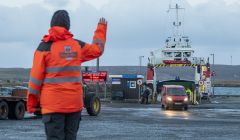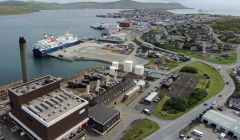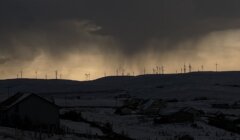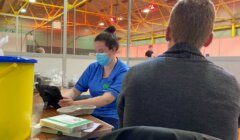Letters / More microplastic questions
Save Shetland is not surprised that SSE are playing down our concerns but given that Mr [Aaron] Priest dismisses the credibility of the data and calculations contained in both the University of Strathclyde and Norwegian Turbine Group reports, can he be more specific and pinpoint which parts of the information he disagrees with, and also provide evidence to back this up, including his assertion that erosion would be minimal?
To be clear the basis of our concerns comes from the Strathclyde University’s report Rain Erosion Maps for Wind Turbines Based on Geographical Locations: A Case Study in Ireland and Britain by Kieran Pugh (doctor of philosophy, mechanical and aerospace engineering) and Margaret Stack (professor, chair in mechanical engineering, BE MSc PhD DSC professor mechanical and aerospace engineering).
Although improbable, SSE states that they do not expect to replace any of the 103 turbines blades during the 25 year lifespan of the project. How often will the blades require repair with leading edge protection to avoid replacement and what risks does this process have for our health and environment?
Whilst SSE says that leading edge protection limits and negates blade damage, they importantly do not say that it eliminates erosion – yet SSE claims that there will be no pollution in the water – is it nil or is it not more likely that there will be potential water pollution?
Save Shetland would like to know what quantity of erosion is considered to be “absolutely minimal” – SSE must have some sort of figure in their minds? Whilst SSE don’t expect it to be significant enough to measure, it seems very convenient that there will be no measurements to evidence what they actually are – ignorance we would argue is not bliss in this case.
Nor does Save Shetland accept some people’s comments that because there are already microplastics in the environment there is an argument for adding more.
Become a member of Shetland News
Councillor Alastair Cooper’s remarks do not reassure Save Shetland’s concerns about what happens if the levels of micro-nanoplastics and possible Bisphenol A rise above permitted levels and are not nil as SSE states. Unfortunate for you if have your own water supply, or eat animals, vegetables or fish that have been polluted by the water.
Since micro-nanoplastics are found on the highest mountains, furthest glaciers and deepest seas, Save Shetland reckons they may just manage to make it to Northmavine.
Save Shetland
Ernie Ramaker
Become a member of Shetland News
Shetland News is asking its many readers to consider paying for membership to get additional features and services: -
- Remove non-local ads;
- Bookmark posts to read later;
- Exclusive curated weekly newsletter;
- Hide membership messages;
- Comments open for discussion.
If you appreciate what we do and feel strongly about impartial local journalism, then please become a member of Shetland News by either making a single payment, or setting up a monthly, quarterly or yearly subscription.













































































